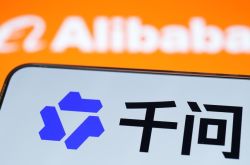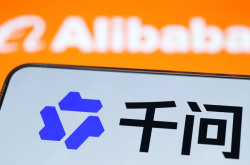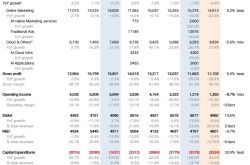160-Year Development Saga: Nokia Officially Announces Delisting; Pins Future Hopes on 6G and AI
![]() 11/17 2025
11/17 2025
![]() 371
371

Recently, a significant announcement has reverberated across global capital markets and the tech sector: Finnish telecommunications titan Nokia Corporation has officially declared that its board of directors has resolved to file an application for the delisting of its shares (ISIN: FI0009000681) from the regulated market of Euronext Paris.
It is understood that Nokia's decision to apply for delisting was not a hasty one. Rather, it was based on a thorough evaluation of the trading volumes, costs, and administrative demands associated with its listing on Euronext Paris.
In terms of trading volumes, Nokia's performance on the Paris market has been lackluster. The daily average trading volumes barely reach €1 million. This pales in comparison to its primary listing on Nasdaq Helsinki in Finland. At times, the trading volumes in Paris have even dipped below 1% of those in Helsinki. Such low trading volumes have turned the Paris market into a "double-edged sword" for Nokia—unappealing yet difficult to relinquish.
From a cost perspective, the expenses incurred to maintain the listing are exorbitant. The annual direct and indirect costs run into several million euros. Compliance reviews, information disclosures, and other administrative tasks consume substantial manpower and resources, yet yield a poor return on investment. In today's cutthroat market, where every penny counts, continuing to list on Euronext Paris is no longer a financially prudent choice for Nokia.
From Peak to Valley: The Decline of the Once-Mighty "Mobile Phone King"
Nokia's ascent began in 1996 when its 3210 model sold a staggering 160 million units, creating a legend in the era of feature phones. By 2006, Symbian system phones were selling over 400 million units annually, capturing a 40% global market share.
However, the 2007 debut of the iPhone completely rewrote the industry's rules. Nokia, stubbornly clinging to its closed Symbian system, missed golden opportunities to collaborate with Android. Its subsequent shift to Windows Phone proved to be a failure due to a weak ecosystem. By 2013, its mobile phone business reported a colossal €5.2 billion loss, with its market share plummeting to a mere 3%. Ultimately, Nokia sold the business to Microsoft for $7.2 billion, exiting the consumer electronics market.
"Nokia's downfall stemmed from a gross misjudgment of technological trends," an industry analyst remarked. "While Apple redefined smartphones with touchscreens, Nokia remained fixated on optimizing keyboard models. Products like the N97 offered an inferior user experience compared to competitors, making user attrition inevitable."
After divesting its mobile phone business, Nokia strengthened its base station operations by repurchasing Nokia Siemens Networks for €1.7 billion in 2014. In 2015, it acquired Alcatel-Lucent for $16.6 billion, becoming the world's second-largest optical network equipment supplier. By 2025, it acquired Infinera for $2.3 billion, capturing 20% of the global optical network market and establishing a comprehensive presence spanning base stations, core networks, and optical transmission.
In the patent arena, Nokia boasts 20,000 telecommunications patents (including over 3,000 5G core patents), generating over €1.5 billion annually in licensing fees from companies like Apple and Samsung. Its 2025 financial report revealed that its telecommunications equipment has been deployed in railway systems across 20 countries, with FRMCS high-speed rail communication latency controlled below 10ms. It also secured data center orders from tech giants such as Amazon and Google.
Nokia is now betting its future on 6G and AI technologies. It has invested a hefty €1 billion in R&D for its "Wireless Home" laboratory, focusing on breakthroughs in spectral efficiency, IP networks, and cloud-native architectures. Its collaboration with NVIDIA on the Arc Aerial RAN Computer platform has demonstrated a 10%-25% increase in 6G uplink coverage distance while simultaneously reducing deployment costs. AI integration optimizes network coverage through sophisticated machine learning models, such as AI-driven network management based on RSCP measurements, which adapt to complex radio environments and enhance signal stability.
Nokia is also at the forefront of the EU's "Hexa-X" initiative, aiming for 6G commercialization by 2030. It has invested €360 million in Germany to develop 6G chips, strengthening Europe's voice in next-generation telecommunications. "Nokia's 6G strategy is forward-looking," a telecommunications expert commented. "Its R&D in key areas like ultra-broadband and intelligent communications could potentially reshape global standards."
From its humble beginnings as a lumber mill to its heyday as a mobile phone giant and now as a telecommunications infrastructure leader, Nokia's 160-year history has been a rollercoaster ride of ups and downs. Its 2025 delisting decision reflects both a short-term response to market volatility and a long-term strategic focus on technological competition.
6G and AI: Reshaping the Global Telecommunications Industry Landscape
At a pivotal juncture for the global telecommunications industry in 2025, Nokia is undergoing a transformation from a former mobile phone giant to a core leader in next-generation telecommunications through groundbreaking advancements in 6G and AI. This 160-year-old Finnish enterprise has achieved comprehensive progress in three key dimensions—6G standardization, AI-native network construction, and vertical industry empowerment—through technological innovation, ecological collaboration, and strategic restructuring, pioneering a new paradigm for the global telecommunications sector.
The world's first AI-driven 6G receiver, jointly developed by Nokia and German test and measurement giant Rohde & Schwarz, marks a technological milestone for the industry. This device compensates for high-frequency signal distortion in real-time using advanced machine learning algorithms, achieving a 10%-25% increase in uplink coverage distance in real-world environments. This enables operators to deploy 6G directly on existing 5G base stations, significantly reducing network construction costs. Test data shows that 6G networks utilizing this technology can extend single-base-station coverage from 200 meters to 250 meters in the 30GHz band, increase throughput by 18%, and optimize power efficiency by 12%.
This breakthrough is a result of innovations at Nokia Bell Labs. The lab's core research team developed an adaptive signal processing architecture that embeds AI models into the RF front end, enabling millisecond-level channel prediction through extensive data training. Rohde & Schwarz provided the FSWX spectrum analyzer and SMW200A signal generator, establishing a complete validation chain from signal generation to AI inference and offering critical hardware support for 6G pre-standardization.
Nokia's strategic collaboration with NVIDIA represents a milestone in the deep integration of the telecommunications and computing industries. NVIDIA made a $1 billion strategic investment in Nokia, acquiring a 2.9% stake, and the two companies jointly developed the AI-RAN (Radio Access Network) platform based on NVIDIA's CUDA architecture. This platform integrates NVIDIA's Aerial RAN Computer Pro acceleration chips with Nokia's 5G/6G software stack, enabling operators to seamlessly transition from 5G-Advanced to 6G through software upgrades.
The collaboration focuses on embedding AI into the telecommunications protocol stack. NVIDIA founder Jensen Huang stated, "AI-RAN will reconstruct telecommunications infrastructure, enabling networks with adaptive resource allocation capabilities." Test data shows that 6G base stations equipped with AI-RAN can dynamically adjust beamforming parameters, improving edge user rates by 40% in dense urban scenarios while reducing air interface latency to below 1 millisecond. T-Mobile US plans to initiate field validation in 2026, focusing on low-latency, high-reliability scenarios such as autonomous driving and industrial robotics.
Nokia's "Generative Agent Simulation Training Platform for Embodied Intelligence (NGAST)," unveiled at the 2025 World Internet Conference, won the Leading Technology Award. This platform enhances humanoid robot training efficiency by 300% through industrial scenario data modeling and thousand-fold data augmentation techniques, enabling flexible production line deployment and high-risk operation substitution in automotive manufacturing.
A collaboration case with SAIC General Motors demonstrated that the NGAST platform improved welding robot adaptability to complex surfaces to an impressive 0.02 millimeters, a 50% enhancement over traditional solutions. In hazardous material handling scenarios, robots autonomously planned paths using reinforcement learning models, reducing human intervention time by 70%. Nokia Bell CEO Cheng Gang stated, "We are integrating 6G's integrated communication, sensing, computing, and intelligence capabilities into industrial operations, with plans to deploy 200 intelligent agent solutions across 10 industries in the next three years."
According to Omdia forecasts, the market for 6G and edge AI integration will exceed $500 billion by 2030. Nokia has outlined a clear roadmap: initiating 6G pre-commercial deployment in 2027, releasing the first 6G standard in 2028, and achieving full commercialization by 2030. Its goal is to capture 30% of the global 6G market share and reshape the telecommunications industry's value distribution.
From a mobile phone empire to a telecommunications "invisible champion" (hidden champion), Nokia's transformation journey underscores the principle that "technological depth determines industrial stature." At the crossroads of 6G and AI, this century-old enterprise is pushing physical limits through foundational innovations and reshaping industry rules through ecological collaboration.







